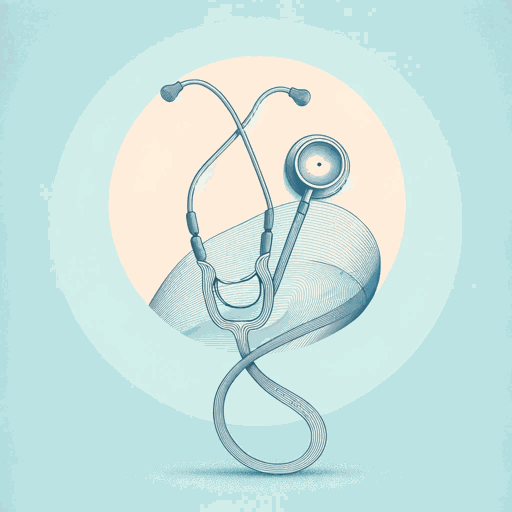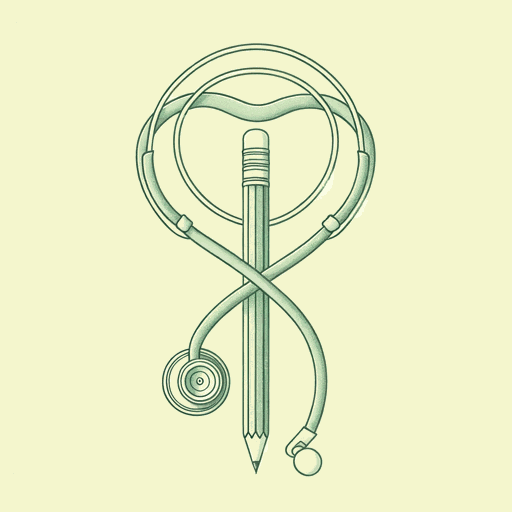43 pages • 1 hour read
Atul GawandeComplications: A Surgeon’s Notes on an Imperfect Science
Nonfiction | Essay Collection | Adult | Published in 2002A modern alternative to SparkNotes and CliffsNotes, SuperSummary offers high-quality Study Guides with detailed chapter summaries and analysis of major themes, characters, and more.
Summary and Study Guide
Overview
Atul Gawande’s Complications: A Surgeon’s Notes on an Imperfect Science is a collection of essays that weaves narratives from Gawande’s personal experience as a surgical resident together with research, philosophy, and case studies in medicine. Published in 2002, Complications became a 2002 National Book Award Finalist for Nonfiction. Gawande, a Rhodes Scholar and MacArthur Fellow, is a surgeon at Brigham and Women’s Hospital in Boston, a professor in the Department of Health Policy and Management at the Harvard T.H. Chan School of Public Health, and a professor of surgery at Harvard Medical School. He’s also the author of three other books on medicine and a writer for The New Yorker and Slate.
Complications contains 14 essays divided into three sections: Part 1, “Fallibility”; Part 2, “Mystery”; and Part 3, “Uncertainty.” In Part 1, Gawande embarks on a candid discussion of errors and imperfections in medicine. In the first essay, “Education of a Knife,” Gawande tracks his ability over time to perform a specific procedure—installing a central line—and discusses the consequences and necessity of training doctors on the job.
“The Computer and the Hernia Factory” contains a debate about technology versus humans in the realm of diagnosis and looks at the successful example of a hospital streamlined for hernia operations, the results of a computer that reads EKGs better than people, and the inextricable role of humans in the diagnosis process. In “When Doctors Make Mistakes,” Gawande reflects on a time he made a mistake performing an emergency tracheotomy and launches into a data-driven discussion on error in medicine. The essay unveils the flawed process by which hospitals seek to address and remedy errors and looks to anesthesiology for a model in error reduction.
In “Nine Thousand Surgeons,” Gawande narrates his first trip to a medical convention and offers a humorous look at doctors on their time off, depicting them as susceptible to flashy displays and extra-curricular distractions just like any other person at any other convention. In “When Good Doctors Go Bad,” Gawande profiles a doctor who destroyed his reputation and harmed patients before seeking rehabilitation. He examines the factors that contribute to the creation, and protection, of “bad doctors.”
In Part 2, Gawande showcases medical mysteries and their implications on physicians and patient care. “Full Moon Friday the Thirteenth” takes a look at superstition and the inexplicable chaos of an emergency room on an “unlucky” day. In “The Pain Perplex,” Gawande presents a patient case of mysterious back pain to crack open a discussion on pain, debunking old theories, examining social and emotional contributing factors, and raising questions about treatment.
In “A Queasy Feeling,” Gawande explores the befuddling subject of nausea with its many disparate causes, its questionable biological purpose, and the inconsistencies in treatment. “Crimson Tide” looks at the phenomenon of blushing, illuminating questions about the evolutionary necessity of blushing as well as about the link between personality and physiology. The final essay in Part 2 is called “The Man Who Couldn’t Stop Eating.” Gawande looks at patients who have undergone a gastric-bypass surgery and asks questions about the nature of appetite and satiety.
Part 3 exposes areas in medicine in which lack of knowledge, guesswork, and intuition play a role. The essay “Final Cut” explores the autopsy as a way to discuss misdiagnosis. In “The Dead Baby Mystery,” Gawande explains sudden infant death syndrome as a blanket diagnosis covering all manner of inexplicable infant deaths and exposes the uncertainty in determining whether abuse is at the center of a child’s injuries.
“Whose Body Is It, Anyway?” presents the debate between patient autonomy and doctor authority in decisions about patient care. Finally, in “The Case of the Red Leg,” Gawande uses a story of a patient with a very rare, very deadly flesh-eating bacteria to discuss the uncertainty at the heart of doctors’ work and to expose the human processes by which doctors make decisions. Through his essays, Gawande puts himself and his patients in focus as he addresses themes of medical fallibility and doctors’ quest for perfection, mystery and the search for truth, and the doubt and uncertainty that characterize in the medical profession.
Related Titles
By Atul Gawande




